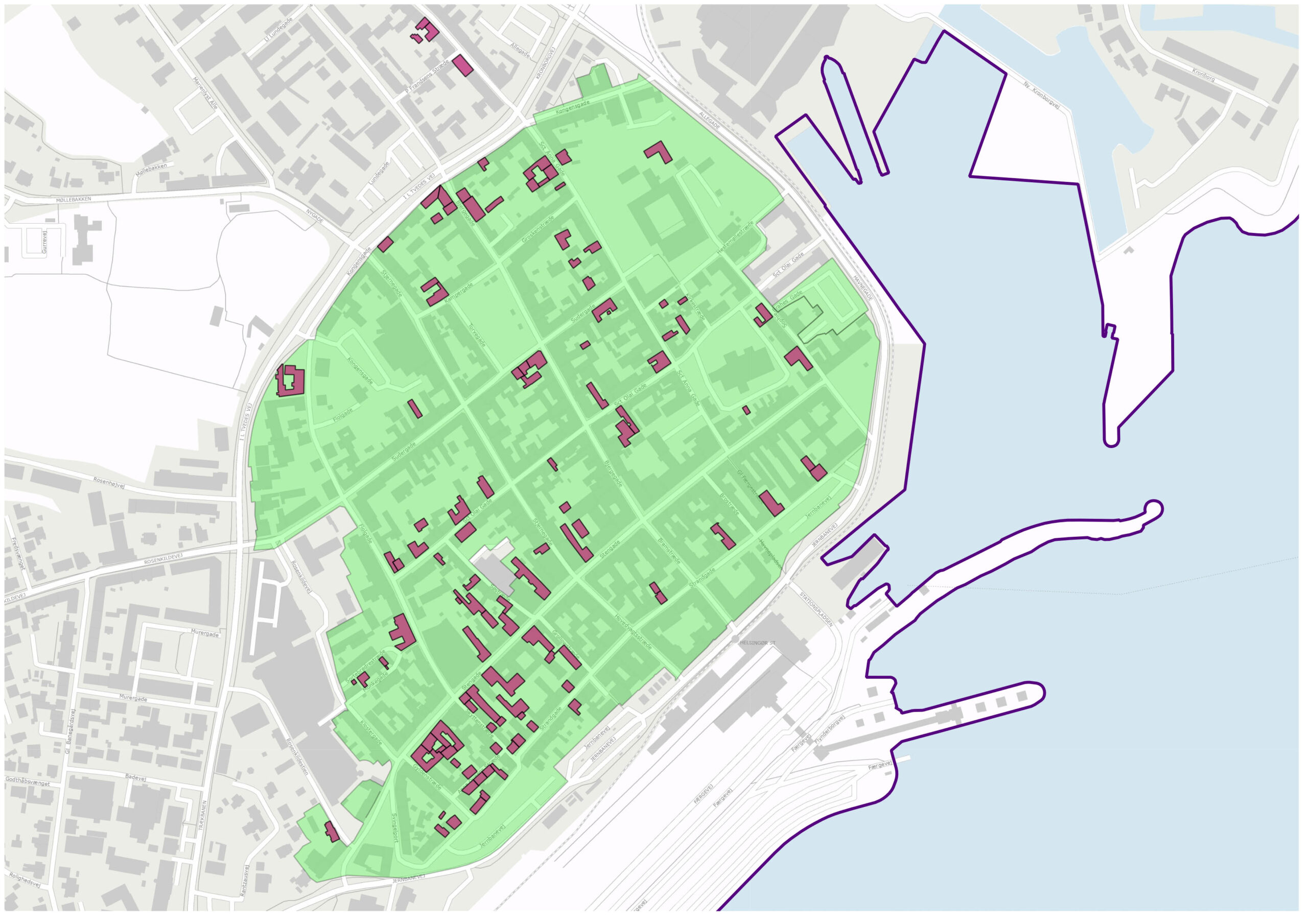CENTURIES-OLD BUILDINGS

58 Stengade
CLASSIC BUILDING TECHNIQUES
Timber frame construction has been used for centuries and is still being used today.
It is a special construction system, where a skeleton of solid timber supports the roof of the house and holds all the walls together.
In timber-framed buildings, the timber is assembled without using nails, screws or fittings. Instead, pegs, plus mortise and tenon joints are used, which secure the pieces of timber.

PRESERVING TIMBER-FRAMED HOUSES
During the 18th century, a lot of timber-framed buildings in Danish towns were demolished due to the risk of fire. Instead of building traditional wooden constructions, it then became a requirement that all newly-built houses should have brick facades from top to bottom.
Fortunately, a number of timber-framed houses have been preserved in Elsinore’s town centre and there are many examples of centuries-old timber-framed houses that have been maintained and are in good condition.

Map of timber-framed houses in Elsinore
LIME AND FILLING IN BAYS
When a timber-framed structure is assembled, the areas between the timbers are bricked up to form bays. A special lime mortar, which does not contain cement, is used for bricklaying or repairing bays. Cement mixtures are too hard and stiff for timber frames, which need to be able to adapt to the changing wind, weather and temperature conditions, and are not suitable for mixing with the lime colour pigments that are traditionally used for painting bays.
Lime is a natural product that is used for brickwork, plastering and treating surfaces with or without the addition of colour pigments. Lime is particularly suitable for timber-framed buildings due to its special properties. It is moisture-wicking, flexible and very durable, as well as being very easy to both maintain and restore.

LINSEED OIL AND WOOD TAR
The wood typically used in timber frame construction is oak which has been air-dried for 3–5 years. As oak grows very slowly, it is very dense and therefore very robust and weatherproof if treated correctly.
Linseed oil and wood tar have been used to treat wood for centuries. They are some of the best products for treating surfaces and impregnating wood, especially in timber frame construction.

Above: Newly-restored timber frame construction.
Below: Testing colour samples of linseed oil.
MAINTENANCE
Repairing and replacing timber frame constructions is technically demanding work, and it must be done properly. If any part of the construction is damaged or deteriorating, you can either clean and preserve the wood, for example, with Finnish wood tar or replace it with new timber.
Watch the film about the restauration of 20 Stengade (in Danish only).

Newly-restored timber frame construction